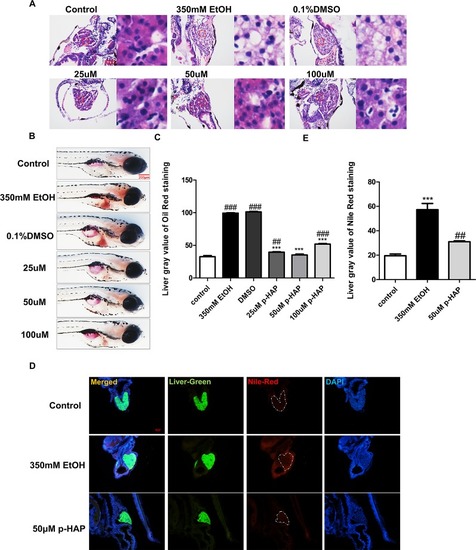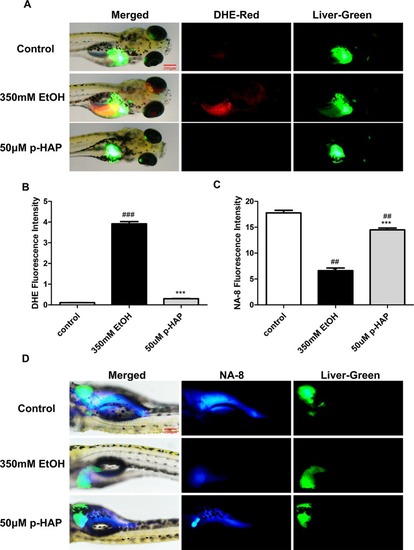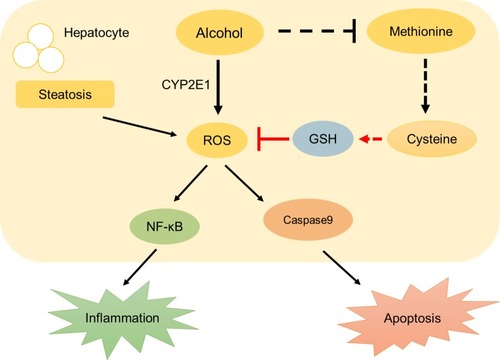- Title
-
P-Hydroxyacetophenone Ameliorates Alcohol-Induced Steatosis and Oxidative Stress via the NF-κB Signaling Pathway in Zebrafish and Hepatocytes
- Authors
- Huang, S., Zhou, C., Zeng, T., Li, Y., Lai, Y., Mo, C., Chen, Y., Huang, S., Lv, Z., Gao, L.
- Source
- Full text @ Front Pharmacol
|
The toxicology of p-HAP in zebrafish larvae. |
|
P-HAP attenuated hepatic steatosis induced by alcohol in zebrafish larvae. |
|
P-HAP reduced lipid accumulation inLO2 induced by alcohol. |
|
P-HAP protected zebrafish larvae from oxidative stress induced by alcohol consumption. |
|
P-HAP Protected Zebrafish Larvae Against Apoptosis and Reduced Inflammation After Alcohol Administration. |
|
A schematic diagram describing the protective mechanisms of p-HAP against alcohol liver injury. |






